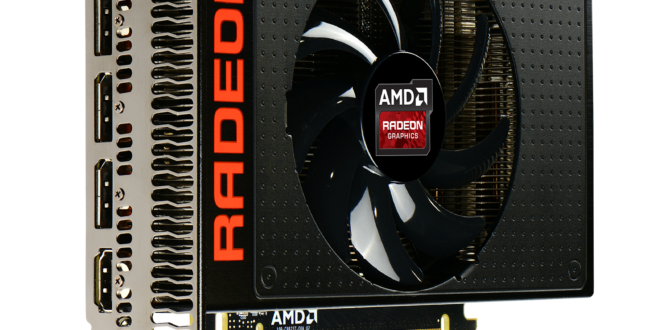Having hinted at a smaller graphics card back in June during E3 in Los Angeles, AMD has unveiled the details of its new six-inch card dubbed the R9 Nano.
AMD revealed in a recent press briefing that the Nano is a niche product for the vendor, which aims to bring high performance to users.
The firm says that the Nano will enable 4K gaming in the living room and will range in price from $199 (£129) to $649 (£422).
The Nano is based on the graphics chip codenamed ‘Fiji’, and is the third ‘Fiji’-based product to launch this summer alongside the AMD Radeon R9 Fury and R9 Fury X graphics cards.
The firm unveiled the previous Radeon R9 290X graphics card a few years ago, and the new R9 Nano is around 30 per cent faster than the R9 290X, so says AMD
Victor Camardo, product manager, Radeon graphics at AMD, said: “The R9 Nano operates on 30 per cent less power than the R9 290X, so not only did we make it faster, we made it smaller and we made it cooler. That’s very important especially in something as small as the R9 Nano.”
AMD has also made various tweaks to the new card to ensure it is kept cool when used, for example in high-performance gaming.
The fins within this card have been placed in a horizontal direction, meaning most of the air leaves out of the back of the card.
“The cooling unit itself is actually a hybrid cooling solution. We have dual key pipe cooling but in addition to that we have a vapour chamber, so you have a key pipe and vapour chamber for the cooling,” added Camardo.
“Although it’s a six-inch design, we’re not using cheap components, we’re actually using high-end premium components.”
In addition, AMD is maintaining the same display configuration as the Fury and Fury X cards with the R9 Nano, as it boasts three display ports and one HDMI connection port, while the design of the actual card has been changed slightly. Instead of the usual glossy black finish, the Nano sports a matte black coating.
“We wanted to make sure the Nano had a premium look and feel, that someone purchasing this card is going to be happy to show it off, in a box or Lan party or in their home,” explains Camardo.
Check out some of the specs for the Nano below:
In addition, AMD has also highlighted some of the benefits of DirectX 12, claiming it taps into all the cores of a multicore CPU simultaneously.
The company revealed that the API provides more on-screen detail, higher framerates, smoother gameplay and reduced system power draw.
This provides various benefits for gamers, for example DirectX 12 improves GPU performance, provides lower latency and breaks complex serial workload into many parallel tasks.
 PCR Tech and IT retail, distribution and vendor news
PCR Tech and IT retail, distribution and vendor news




